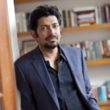The Facemaker: A Visionary Surgeon's Battle to Mend the Disfigured Soldiers of World War I
(Libby/OverDrive eAudiobook)
Available Platforms
Description
A New York Times Bestseller"Enthralling. Harrowing. Heartbreaking. And utterly redemptive. Lindsey Fitzharris hit this one out of the park." —Erik Larson, author of The Splendid and the VileLindsey Fitzharris, the award-winning author of The Butchering Art, presents the compelling, true story of a visionary surgeon who rebuilt the faces of the First World War’s injured heroes, and in the process ushered in the modern era of plastic surgery.From the moment the first machine gun rang out over the Western Front, one thing was clear: humankind’s military technology had wildly surpassed its medical capabilities. Bodies were battered, gouged, hacked, and gassed. The First World War claimed millions of lives and left millions more wounded and disfigured. In the midst of this brutality, however, there were also those who strove to alleviate suffering. The Facemaker tells the extraordinary story of such an individual: the pioneering plastic surgeon Harold Gillies, who dedicated himself to reconstructing the burned and broken faces of the injured soldiers under his care.Gillies, a Cambridge-educated New Zealander, became interested in the nascent field of plastic surgery after encountering the human wreckage on the front. Returning to Britain, he established one of the world’s first hospitals dedicated entirely to facial reconstruction. There, Gillies assembled a unique group of practitioners whose task was to rebuild what had been torn apart, to re-create what had been destroyed. At a time when losing a limb made a soldier a hero, but losing a face made him a monster to a society largely intolerant of disfigurement, Gillies restored not just the faces of the wounded but also their spirits.The Facemaker places Gillies’s ingenious surgical innovations alongside the dramatic stories of soldiers whose lives were wrecked and repaired. The result is a vivid account of how medicine can be an art, and of what courage and imagination can accomplish in the presence of relentless horror.
More Details
Similar Titles From NoveList
Similar Authors From NoveList
Published Reviews
Booklist Review
In this commendable biography of Harold Gillies, Fitzharris (The Butchering Art, 2017) describes the beginning of modern facial reconstructive surgery amidst the ghastly violence of WWI. Gillies was a devoted, innovative surgeon who repaired severe facial war wounds at Britain's Queen's Hospital. There he led a multidisciplinary team, including dentists, doctors, and even an artist. The utilization of skin flaps, bone grafts, weighted dentures, and other procedures were the start of plastic surgery. Maxillofacial damage often impairs the ability to eat and speak. Facial disfigurement can negatively affect personality, mood, and relationships. Some patients required dozens of operations followed by long recoveries and lasting distress. Stirring stories of maimed soldiers and the compassionate hospital staff who cared for them enrich the narrative. Fitzharris vividly details mutilated faces and the savagery, suffering, and slaughter of war. "The dead hung like laundry over barbed wire, covered inches deep with a black fur of flies." The empathetic, groundbreaking Gillies bemoaned the consequences of warfare. He prohibited mirrors on his hospital wards, and Fitzharris tells readers why: "Broken faces frequently led to broken hearts during the war."
Publisher's Weekly Review
Medical historian Fitzharris (The Butchering Art) paints a fascinating portrait of pioneering plastic surgeon Harold Gillies and the soldiers whose faces he rebuilt during WWI. Drawing on firsthand accounts of trench warfare, Fitzharris shows how "Europe's military technology had wildly surpassed its medical capabilities," with facial wounds caused by shrapnel, burns, and infections far more common than in earlier conflicts. Gillies, a Cambridge-educated New Zealander, first supervised a unit dedicated to face and jaw wounds at the Cambridge Military Hospital, where he developed new techniques for skin grafts and rebuilding noses and eyelids, then established Queen's Hospital in Sidcup, England--the first hospital devoted to facial reconstruction. Fitzharris spotlights some of Gillies's collaborators, including French American dentist Auguste Charles Valadier, who early in the war converted his Rolls Royce into a mobile operating room, and artist Henry Tonks, a trained doctor who created pictorial records of patients before, during, and after their operations. She also details the hard-won physical and psychological recoveries of patients like Pvt. Percy Clare, who was mistakenly sent to the wrong hospital before undergoing several operations at Queen's Hospital. Meticulously researched and compulsively readable, this exceptional history showcases how compassion and innovation can help mitigate the terrible wounds of war. (June)
Library Journal Review
Fitzharris (The Butchering Art: Joseph Lister's Quest To Transform the Grisly World of Victorian Medicine), an Oxford-trained historian of medicine, writes an engaging, at times moving biography of Harold Gillies, whose work rebuilding the faces of British soldiers disfigured during World War I, laid the groundwork for developing modern plastic surgery. The book chronicles, with considerable pathos and sensitivity, the ethics and moral feelings that drove Gillies' work. He believed that individuals with facial disfigurements often suffered a kind of social isolation when they returned home. Surgery was a way of helping them regain dignity and be integrated into society. Gillies was pioneering and often experimental. At times his efforts were quite successful, and at other times, his efforts did not achieve his desired hopes. Still, he continued to develop his techniques in the hope that he could improve the lives of soldiers and make them more able to return to society. The book gives an especially detailed portrait of the hospital facility that Gilles established in order to do his work. VERDICT This book will interest both general readers and historians of medicine, and will remind readers of the long-term costs of the horrors of modern war.--Aaron Klink
Kirkus Book Review
The author of The Butchering Art returns with "a new perspective on the terrible consequences of trench warfare, and the private battles that many men fought long after they put down their rifles." "Disfigured soldiers," writes Fitzharris, "often suffered self-imposed isolation from society following their return from war." While this has been true throughout history, the vast increase in military technology during World War I produced an avalanche of torn flesh and mutilated body parts that overwhelmed surgeons. Among more than 20 million injured, nearly 300,000 soldiers suffered facial trauma. In this often graphic yet inspiring, engaging book, the author focuses on Harold Gillies (1882-1960), a successful British ear, nose, and throat surgeon whose pioneering work in repairing faces places him among the war's few true heroes. Sent to France early in the war, he observed freelance dental surgeons (the Royal Army Medical Corps had none) experimenting with facial reconstruction. He quickly established that the first principle of battlefield surgery--to close gaping wounds--was a disaster for jaw and facial injuries. Unless the damaged underlying structures were repaired first, the procedures guaranteed a grotesque end result. Returning to the Queen's Hospital in London, Gillies persuaded the chief surgeon to establish a facial injury ward, which eventually grew to more than 1,000 beds and employed dozens of surgeon, dentists, artists, and sculptors who pioneered a new specialty: plastic surgery. The author's case reports of individual soldiers are not for the faint of heart, but she delivers a consistently vivid account of the ingenious techniques involving skin flaps, grafting, reconstruction, and prostheses, most of which Gillies and colleagues invented. Many victims required dozens of painful procedures, and not all succeeded, but his accomplishments, along with his compassion, made him an object of worship from patients. A "genuine visionary in his field," he received a good deal of favorable publicity in the media but only modest official recognition, including a knighthood in 1930, and he continued to practice until his death. An excellent biography of a genuine miracle worker. Copyright (c) Kirkus Reviews, used with permission.
Booklist Reviews
In this commendable biography of Harold Gillies, Fitzharris (The Butchering Art, 2017) describes the beginning of modern facial reconstructive surgery amidst the ghastly violence of WWI. Gillies was a devoted, innovative surgeon who repaired severe facial war wounds at Britain's Queen's Hospital. There he led a multidisciplinary team, including dentists, doctors, and even an artist. The utilization of skin flaps, bone grafts, weighted dentures, and other procedures were the start of plastic surgery. Maxillofacial damage often impairs the ability to eat and speak. Facial disfigurement can negatively affect personality, mood, and relationships. Some patients required dozens of operations followed by long recoveries and lasting distress. Stirring stories of maimed soldiers and the compassionate hospital staff who cared for them enrich the narrative. Fitzharris vividly details mutilated faces and the savagery, suffering, and slaughter of war. The dead hung like laundry over barbed wire, covered inches deep with a black fur of flies. The empathetic, groundbreaking Gillies bemoaned the consequences of warfare. He prohibited mirrors on his hospital wards, and Fitzharris tells readers why: Broken faces frequently led to broken hearts during the war. Copyright 2022 Booklist Reviews.
Library Journal Reviews
Fitzharris (The Butchering Art: Joseph Lister's Quest To Transform the Grisly World of Victorian Medicine), an Oxford-trained historian of medicine, writes an engaging, at times moving biography of Harold Gillies, whose work rebuilding the faces of British soldiers disfigured during World War I, laid the groundwork for developing modern plastic surgery. The book chronicles, with considerable pathos and sensitivity, the ethics and moral feelings that drove Gillies' work. He believed that individuals with facial disfigurements often suffered a kind of social isolation when they returned home. Surgery was a way of helping them regain dignity and be integrated into society. Gillies was pioneering and often experimental. At times his efforts were quite successful, and at other times, his efforts did not achieve his desired hopes. Still, he continued to develop his techniques in the hope that he could improve the lives of soldiers and make them more able to return to society. The book gives an especially detailed portrait of the hospital facility that Gilles established in order to do his work. VERDICT This book will interest both general readers and historians of medicine, and will remind readers of the long-term costs of the horrors of modern war.—Aaron Klink
Copyright 2022 Library Journal.PW Annex Reviews
Medical historian Fitzharris (The Butchering Art) paints a fascinating portrait of pioneering plastic surgeon Harold Gillies and the soldiers whose faces he rebuilt during WWI. Drawing on firsthand accounts of trench warfare, Fitzharris shows how "Europe's military technology had wildly surpassed its medical capabilities," with facial wounds caused by shrapnel, burns, and infections far more common than in earlier conflicts. Gillies, a Cambridge-educated New Zealander, first supervised a unit dedicated to face and jaw wounds at the Cambridge Military Hospital, where he developed new techniques for skin grafts and rebuilding noses and eyelids, then established Queen's Hospital in Sidcup, England—the first hospital devoted to facial reconstruction. Fitzharris spotlights some of Gillies's collaborators, including French American dentist Auguste Charles Valadier, who early in the war converted his Rolls Royce into a mobile operating room, and artist Henry Tonks, a trained doctor who created pictorial records of patients before, during, and after their operations. She also details the hard-won physical and psychological recoveries of patients like Pvt. Percy Clare, who was mistakenly sent to the wrong hospital before undergoing several operations at Queen's Hospital. Meticulously researched and compulsively readable, this exceptional history showcases how compassion and innovation can help mitigate the terrible wounds of war. (June)
Copyright 2022 Publishers Weekly Annex.Reviews from GoodReads
Citations
Fitzharris, L., & Gillies, D. (2022). The Facemaker: A Visionary Surgeon's Battle to Mend the Disfigured Soldiers of World War I (Unabridged). Macmillan Audio.
Chicago / Turabian - Author Date Citation, 17th Edition (style guide)Fitzharris, Lindsey and Daniel Gillies. 2022. The Facemaker: A Visionary Surgeon's Battle to Mend the Disfigured Soldiers of World War I. Macmillan Audio.
Chicago / Turabian - Humanities (Notes and Bibliography) Citation, 17th Edition (style guide)Fitzharris, Lindsey and Daniel Gillies. The Facemaker: A Visionary Surgeon's Battle to Mend the Disfigured Soldiers of World War I Macmillan Audio, 2022.
Harvard Citation (style guide)Fitzharris, L. and Gillies, D. (2022). The facemaker: a visionary surgeon's battle to mend the disfigured soldiers of world war I. Unabridged Macmillan Audio.
MLA Citation, 9th Edition (style guide)Fitzharris, Lindsey, and Daniel Gillies. The Facemaker: A Visionary Surgeon's Battle to Mend the Disfigured Soldiers of World War I Unabridged, Macmillan Audio, 2022.
Copy Details
| Collection | Owned | Available | Number of Holds |
|---|---|---|---|
| Libby | 2 | 2 | 0 |

































